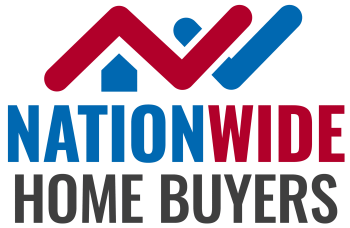Are you a homeowner who feels overwhelmed by the clutter in your home? Do you struggle to keep up with cleaning and organizing due to hoarding tendencies? You are not alone. Hoarding can be a challenging issue, both physically and emotionally, for those struggling with it. That’s why we have created this comprehensive guide to help homeowners like yourself tackle the overwhelming task of decluttering and cleaning their homes. In this guide, we will provide a detailed checklist that covers all areas of your home, from top to bottom, so that you can effectively clear out excess items while also creating an organized living space.
Understanding Hoarding: An Overview
Are you a homeowner struggling to maintain an organized living space? Do piles of clutter seem to take over your home, making it difficult for you and your family to navigate through rooms with ease? If this sounds familiar, then chances are high that you or someone in your household may be a hoarder. Understanding hoarding is crucial in order to address the issue effectively. In this comprehensive guide, we will provide valuable insight on the topic and offer an overview of how homeowners can create a cleaning checklist tailored specifically for individuals who struggle with hoarding tendencies. So let’s dive into understanding what exactly constitutes as hoarding behavior and how we can tackle it head-on!
Defining Hoarding Disorder and Its Implications
Hoarding disorder is a mental health condition where individuals have difficulty parting with their possessions, leading to extreme clutter and disorganization in their living spaces. This behavior can cause significant distress and impairment in functioning for the individual and those around them. Hoarding disorder also has serious implications on physical health as well, such as increased risk of falls or fire hazards due to the accumulation of items. It can also strain relationships with family members, friends, and even landlords or neighbors who may be concerned about safety or sanitation issues caused by hoarding behaviors. Additionally, it may lead to financial problems if excessive spending on acquiring more items occurs. Overall, defining hoarding disorder helps raise awareness about its impact on individuals’ lives and highlights the need for proper diagnosis and treatment to improve quality of life for those affected by this condition.
The Psychological Aspects of Hoarding
Hoarding is a complex mental disorder that involves the excessive acquisition and inability to discard or give away possessions, leading to an accumulation of clutter in one’s living space. The psychological aspects of hoarding are multifaceted and can vary from person to person. One common feature is the emotional attachment individuals have towards their possessions, often associating them with feelings of comfort, security, or identity. This bond makes it challenging for individuals struggling with hoarding to let go of items even if they serve no practical purpose. Hoarders also tend to experience significant distress when faced with discarding objects due to fears of losing something valuable or making a wrong decision. Moreover, many hoarders struggle with perfectionism and indecisiveness which contributes to their difficulty in organizing and managing their belongings effectively. These psychological factors make treating hoarding particularly challenging but understanding them is crucial in developing effective treatment strategies for those affected by this disorder.
Recognizing the Signs of Hoarding
Hoarding is a mental health disorder that can have serious consequences on an individual’s physical and emotional well-being. Recognizing the signs of hoarding is crucial in order to get proper help for those who suffer from this condition. Some common signs of hoarding include difficulty throwing away items, excessive clutter and disorganization in living spaces, feeling anxious or distressed when faced with discarding possessions, and isolation due to shame or embarrassment about their living conditions. Other warning signs may include trouble making decisions, strong attachments to objects with little monetary value, and believing that they might need certain things someday. By recognizing these signs early on, individuals can seek professional support and treatment before it escalates into a more severe problem.
Preparing for the Hoarder Cleaning Process
Preparing for the hoarder cleaning process can be a daunting task, but it is an important step towards creating a safe and healthy environment. The first thing to do is to develop a plan with clear goals and objectives. This includes identifying the areas that require decluttering, setting priorities for which rooms or spaces will be tackled first, and establishing a timeline for completing each stage of the clean-up process. It’s also crucial to gather all necessary supplies such as garbage bags, boxes, gloves, masks and other protective gear before starting the actual cleaning. Setting up designated sorting stations or piles (e.g., keep, donate/sell/recycle) can help make decision-making easier when deciding what items are worth keeping or discarding during the cleanup process. Finally,before beginning any work,it’s essential to communicate clearly with family members about their role in this process,and ensure they feel supported throughout every step of this challenging yet rewarding journey towards creating an organized living space free from clutter!
Assembling a Cleaning Team
Assembling a cleaning team is crucial for maintaining the cleanliness and hygiene of any space. A well-organized team can efficiently divide tasks, utilize resources effectively, and ensure that all areas are thoroughly cleaned. It also helps to have individuals with different skill sets so that each task can be completed proficiently. When assembling a cleaning team, it is important to consider not only individual capabilities but also their compatibility as a group. Effective communication and teamwork are essential for achieving desired results in the shortest amount of time possible. With an efficient and dedicated cleaning team in place, one can rest assured that their space will always be spotless and welcoming for everyone who enters it.
Necessary Supplies for a Hoarder’s House Clean-Up
When embarking on a hoarder’s house clean-up, it is important to have the necessary supplies in order to effectively and safely declutter the space. Depending on the severity of the hoarding situation, some essential items may include heavy-duty garbage bags, gloves, masks or respirators for potential hazardous materials such as mold or pests. Additionally, having bins or boxes for sorting items into categories (keep/donate/trash) can help with organization during the cleaning process. For larger objects that need to be removed from the home, having tools such as dollies or carts can aid in moving them out more efficiently. It may also be helpful to have cleaning products like disinfectant sprays and sponges available for use once clutter has been cleared away. Overall, being prepared with these necessary supplies can make a difficult task like restoring a hoarder’s home more manageable and successful.
Creating a Cleaning Strategy
Creating a cleaning strategy is an essential aspect of maintaining a clean and organized environment. It involves identifying areas that need to be cleaned, setting specific goals for each area, and establishing a systematic approach to achieve those goals. A good cleaning strategy takes into consideration the frequency of certain tasks, available resources such as equipment and personnel, and any potential challenges that may arise during the process. Additionally, it allows for flexibility in case adjustments or modifications are needed along the way. By developing a solid cleaning strategy, one can not only ensure cleanliness but also improve efficiency and productivity in their space.
Detailed Hoarder Cleaning Checklist: Step-by-Step Guide
A detailed hoarder cleaning checklist can be a helpful guide for individuals or professional cleaners looking to tackle hoarding situations. This step-by-step guide includes specific tasks and tips to effectively clean up and organize a hoarded space. The first step is decluttering, which involves sorting items into three categories: keep, donate/sell, and dispose of. Next is deep cleaning the space, including dusting surfaces, vacuuming floors, and sanitizing areas where food may have been stored. Organizing strategies such as labeling boxes and creating designated storage areas are also important steps in the process. Additionally
Sorting and Organizing Items
Sorting and organizing items is an essential skill that helps us to efficiently manage our belongings. It involves categorizing similar items together, arranging them in a specific order, and creating a designated space for each item. By doing this, we can easily locate the things we need without wasting time searching through cluttered spaces. Organizational systems also promote cleanliness as it becomes easier to clean when everything has its own place. Additionally, sorting and organizing allow us to remain focused and productive by eliminating distractions caused by messy surroundings. Overall, mastering this skill not only keeps our physical spaces organized but also promotes mental clarity leading to increased productivity.
Deep Cleaning Techniques for a Hoarder’s House
Deep cleaning a hoarder’s house can be an overwhelming and challenging task. It is important to approach this process with patience, understanding, and empathy for the individual living in the space. The first step is to create a plan and set realistic goals for each room. Start by removing all items from one room at a time, sorting them into categories such as keep, donate or discard. Use protective gear like gloves and masks while handling potentially hazardous materials. Thoroughly clean the surfaces using appropriate disinfectants to eliminate any bacteria or mold growth. Consider hiring professionals for tasks like carpet cleaning and pest control if needed. It may also be helpful to establish organizational systems that will help prevent clutter from building up again in the future.
Dealing with Biohazards and Unhealthy Conditions
Dealing with biohazards and unhealthy conditions is an essential aspect of maintaining a safe and healthy environment. This includes identifying potential hazards, such as harmful chemicals or infectious materials, and implementing necessary precautions to prevent harm to individuals. Proper training on handling these substances must be provided to those who are in direct contact with them. Regular inspections and maintenance should also be conducted to ensure that any equipment or facilities are working properly without posing a risk. In addition, proper disposal methods for hazardous waste should always be followed to avoid contamination of the surrounding area. By effectively dealing with biohazards and unhealthy conditions, we can protect not only ourselves but also our community from potential health risks.
Post-Cleaning Procedures and Maintaining a Clutter-Free Environment
After completing a thorough cleaning, it is important to follow certain post-cleaning procedures in order to maintain a clutter-free environment. Begin by properly disposing of any used cleaning supplies and tools. Ensure that all surfaces have been wiped down and dried completely to prevent bacteria growth. Put away any items that were temporarily moved during the cleaning process back into their designated places. It may also be helpful to use storage containers or labels for organization purposes. In addition, establishing daily habits such as picking up after oneself and putting things back where they belong can help maintain an overall clutter-free space. Regularly decluttering unnecessary items will also prevent build-up over time, making future cleanings easier and more efficient.
Disposing of or Donating Unwanted Items
When we accumulate items that we no longer need or use, it is important to carefully consider how to dispose of them. One option is donating these unwanted items to charities or organizations in need. This not only helps declutter our own spaces but also serves a greater purpose by providing resources for those less fortunate. Additionally, many donated items can be repurposed and given a new life instead of ending up in landfills. However, if the item is damaged or cannot be donated, proper disposal methods such as recycling should be utilized to minimize environmental impact. By taking the time and effort to properly dispose of unwanted items, we can make a positive impact on both our personal space and society as a whole.
Repairing Damages and Restoring the Home
Repairing damages and restoring the home is a crucial step in the recovery process after facing unforeseen disasters or accidents. Whether it be from natural calamities like floods, hurricanes or man-made incidents such as fire outbreaks, damages to our homes can leave us feeling overwhelmed and helpless. However, with proper repair work and restoration efforts, we can turn a damaged house back into a safe haven for ourselves and our loved ones. This involves assessing the extent of damage, hiring skilled professionals to carry out repairs, cleaning up debris and making necessary improvements to prevent future mishaps. Not only does this help physically rebuild the structure of our homes but also provides emotional healing by giving us a sense of normalcy amidst chaos. The task may seem daunting at first but repairing damages and restoring the home is an essential part of moving forward from any unexpected disaster.
Strategies to Prevent Future Hoarding
Hoarding is a challenging condition that can have negative consequences on an individual’s physical and mental well-being, as well as their relationships with others. To prevent future hoarding, there are some strategies that individuals can adopt. First, seeking therapy or counseling to address underlying emotional issues related to hoarding tendencies can be helpful. Additionally, setting clear boundaries and limits for oneself when it comes to acquiring new items and regularly decluttering possessions can help in preventing excessive accumulation of objects. Educating oneself about the dangers of hoarding behavior and learning healthy coping mechanisms for managing stress or anxiety without turning to collecting items is also crucial in preventing future episodes of hoarding. Lastly, building a support network through family members, friends or professional organizers who understand the challenges of hoarding disorder can provide essential assistance in maintaining clutter-free living spaces.






